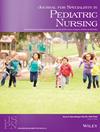Factors influencing job stress in pediatric nurses during the pandemic period: Focusing on fatigue, pediatric nurse−parent partnership
Abstract
Purpose
The purpose of this study was to identify the factors influencing pediatric nurses' job stress, including their level of fatigue and partnerships with the parents of patients. This investigation aimed to findings of this study may lead to the development of strategies to reduce pediatric nurse's job stress.
Design and Methods
Participants were recruited from pediatric, pediatric intensive care, and neonatal intensive care units across seven general hospitals. Eligibility requires a minimum of 6 months of experience in pediatric nursing. The sample size was determined using the G*power program, considering various variables, including age, marital status, presence of children, and work-related characteristics, leading to a final sample size of 135, adjusted for a 10% dropout rate. Data collection was conducted through self-report questionnaires, and analysis involved frequency, percentage, mean, standard deviation, t-tests, ANOVA, and stepwise multiple regression, using SPSS Statistics 27.0.
Results
This study confirmed a significant correlation between pediatric nurses' fatigue and job stress, with higher levels of fatigue associated with increased job stress. Stepwise regression analysis showed that fatigue and age were significant predictors of job stress among pediatric nurses, explaining 23% of the variance. However, detailed analysis showed that younger nurses had lower job stress scores compared to older nurses. This result suggests that more experienced nurses may experience higher job stress due to increased responsibilities and emotional burdens.
Practice Implications
This study identified the need for effective strategies to manage fatigue and reduce job stress among pediatric nurses during the COVID-19 pandemic. Younger nurses, particularly those under 25 and between 26 and 30 years old, experience lower job stress compared to older nurses. Comprehensive support systems should be developed, including workload management, emotional support, and programs to enhance partnerships between nurses and parents. These strategies can improve job satisfaction and the quality of care provided to young patients. Additionally, they ensure a more resilient and effective healthcare workforce during pandemics and similar crises.

 求助内容:
求助内容: 应助结果提醒方式:
应助结果提醒方式:


